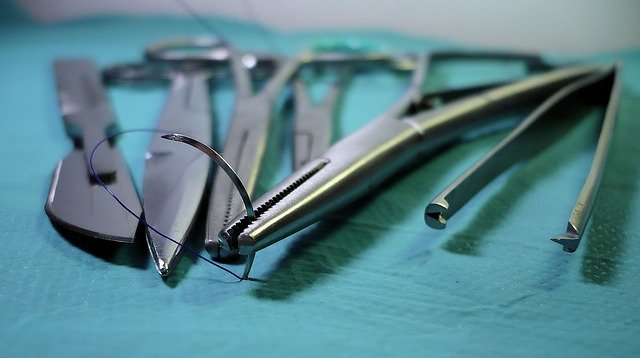Elective Surgeries: We’re Back in the Saddle Again!
Way before Jack Nicholson in the Shining had the memorable line of ‘I’m Back!’, Gene Autry, the Singing Cowboy had a 1938 hit, “I’m Back in the Saddle Again.” Like Gene, healthcare has a long history of climbing back on the last horse that threw us. The pandemic threw healthcare worldwide for a loop but by and large, healthcare professionals responded with the aplomb they are respected for. Hospitals needed to create immediate capacity to treat COVID-19 patients. Beds usually earmarked for anything other than emergencies or critical care health needs like labor/delivery or cardiac care were given over to treat infectious disease. Elective surgeries, defined by The Anesthetic Quality Institute as “a surgical, therapeutic or diagnostic procedure that can be performed at any time or date” were halted in their tracks. Cosmetic, orthopedic and many other time-sensitive procedures like screenings, biopsies, hernia and valve replacements were placed on indefinite hold. Delays in many of these ‘electives’ can significantly impact morbidity and mortality but the balance between the impact of the procedure, patient need and available resources in the face of the pandemic became a driving force. While many elective-type procedures do not qualify as an immediate health need, they are essential to the overall health and well-being for patients. In addition, they generate high profit margins necessary for hospitals’ bottom lines. Lucrative procedures disappeared, dental and physician offices took a huge hit, and these stoppages and slowdowns will likely continue through the end of the year.
CARES ACT 2020
The Coronavirus Aid, Relief and Economic Security Act was enacted 3/27/2020. It was designed to support COVID-19 care costs and reimburse lost revenue. It aimed to provide relief for individuals and businesses negatively affected by the pandemic. Congress appropriated $140 billion dollars to support the US healthcare system with $100 billion going directly to hospitals. It accelerated Medicare payments and was originally paid out on the Medicare fee-for-service formula. This proved to be a disadvantage for those hospitals serving primarily uninsured or publicly insured patients. It called for the temporary halt to elective procedures in order to slow down the transmission and progression of the virus and to relieve hospitals overwhelmed by COVID-19 patients. However under the Act, hospitals with low COVID populations were still required to shut down elective procedures.
REVENUE REPERCUSSION
Revenue losses by US hospitals due to delayed elective procedures are estimated at $22.3 billion for March-May 2020 and it may take 12-22 months to recoup that lost revenue. Hardest hit are urban and rural non-teaching hospitals. In February 2021, the American Hospital Association findings predict 2021 revenues to be decreased by as much as $122 billion. This is on the heels of the estimated $323 billion loss in 2020. The US has an estimated 1 million backlogged spinal and joint surgeries through 2022 and the UK estimates a total surgical backlog of 10 million.

SOLUTIONS
It may take over a year for the US to address the total backlog even with the innovative efforts healthcare is known for to increase output. Solutions are in the works. Staff shortages and burnout are being addressed by aggressive hiring and training programs, furloughed workers are returning, retrained and reassigned as needed. Procedures are being scheduled beyond normal hours and off-shifts to include nights and weekends. Marketing efforts are underway to alleviate patient safety concerns stressing the measures being taken to keep them safe enough to confidently schedule elective surgeries and address other fears. Ongoing fear of infection and risk of new strains (although common sense told us all that that was not only possible but likely) are being targeted with information designed to restore confidence. A certain portion of the population will continue to stay away despite all evidence, postponing or even refusing treatment entirely while knowing this can adversely affect their outcomes. Logically there is no good reason to delay oncology treatments or other life-saving procedures. Fear of the vaccines themselves whether from basic mistrust, perceived lack of clinical trials, effectiveness or potential long-term side effects are being counterbalanced with messages of hope, stressing shrinking numbers across all markers. The new protection protocols put in place last year will likely largely remain, modified by common sense and experience. Addressing the risk/reward paradigm of patient fear is key to returning confidence in elective procedures. Overall, the recovery time for a complete return from back log, lost revenue and confidence is estimated to be 4-164 months based on individual hospital makeup. For example, a facility operating at 75% pre-pandemic and 45% post-pandemic will require 12-22 months to clear things up. The point here is, IT IS happening.
Some surgeries may never return to hospital settings in pre-pandemic fashion after having moved to outpatient or other alternative settings. Especially since Medicare reimbursements came through, those are unlikely to be rescinded without a fight. Cardiac and Oncology procedures will rebound quickly. Orthopedics may be slower, but profitability will drive this recovery. Soon most if not all hospitals will be back in the saddle, having restarted business-as-usual although running at full capacity may look a little different. Hospital facilities, equipment and personnel are forever changed by this latest health crisis, but healthcare and the professionals who make it their life’s calling passion have always shown resilience, creativity and tenacity.
NHS Solutions’ interim healthcare leaders now have firsthand, frontline experience in dealing with a global health crisis. The skills honed through a career in healthcare leadership have now expanded to cover what was not imaginable when our senior leaders were earning their degrees. It is a credit to them and their chosen profession that they have been there when we all needed them most. Contact us to discuss your hospital’s reemerging leadership needs in surgical services. We have skilled, experienced interim nurse leaders ready to start immediately.
